The Stuart Light Tank M3A1
This Stuart Light Tank M3A1 can be found at the French Tank Museum in Saumur in the Loire Valley. The Museum is called Musée des Blindés ou Association des Amis du Musée des Blindés, 1043, route de Fontevraud, 49400 Saumur, France www.museedesblindes.fr . The word Blindés means armoured.
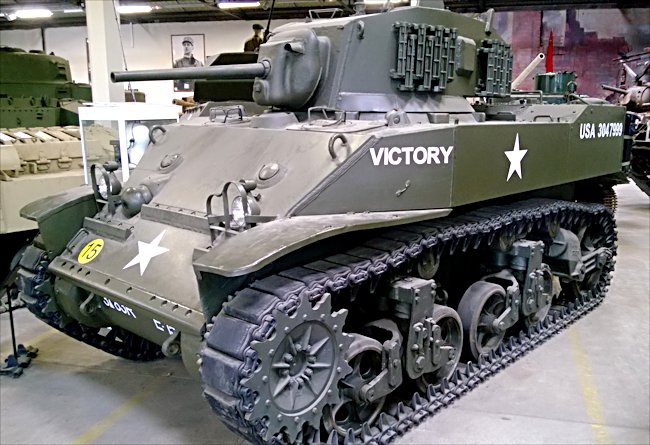
Stuart Light Tank M3A1
The M3 Stuart tank arrives in North Africa 1941
In the spring of 1941 rumours were already circulating back to British tank crews preparing for action that the Crusader and new M3 Stuart tanks currently in use in the Desert were no match for the German Panzer Mark III and Mark IV tanks in equal combat. Yes the guns on the British tanks could knock out these enemy tanks but the problem was the poor effective range of the British guns. British Tank driver Jack Rollinson commented, "They could knock out a German, but the problem was you never got close enough before he gave you a thoroughpasting. When we did knock out a panzer it was usually more by good luck than good judgement."
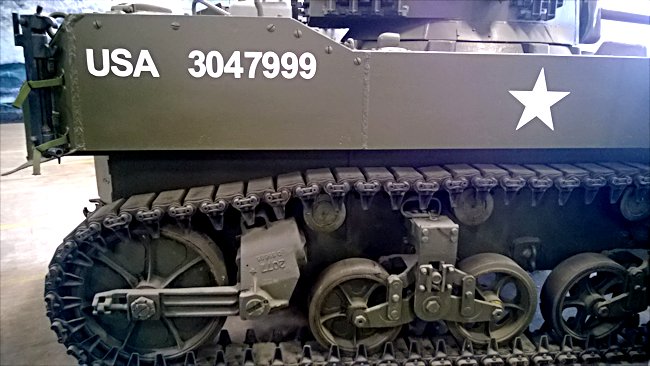
Gunnery was the main inadequacy of the British tanks at that time. It did not help that the Germans had learnt the lessons from the Blitzkrieg and the Battle for France. Their panzers did not have enough armour to protect their crews compared to the French Char B1-bis heavy tank and the British Matilda II tank. Shells fired from the guns fitted to their tanks just bounced off the frontal armour of the Matilda and Char B1. The Panzers that were now being used in the Desert Campaign had upgraded armour and main gun. The situation had now been reversed.
After an abortive raid by Rommel in the North African desert campaign in November 1941. British General Cunningham launched ‘Operation Crusader’ counter attack on 18th November with 750 tanks of which 280 were the newly arrived US made M3 Stuart Tanks (nicknamed ‘Honey’ by the British tank crews), supported by 600 guns.
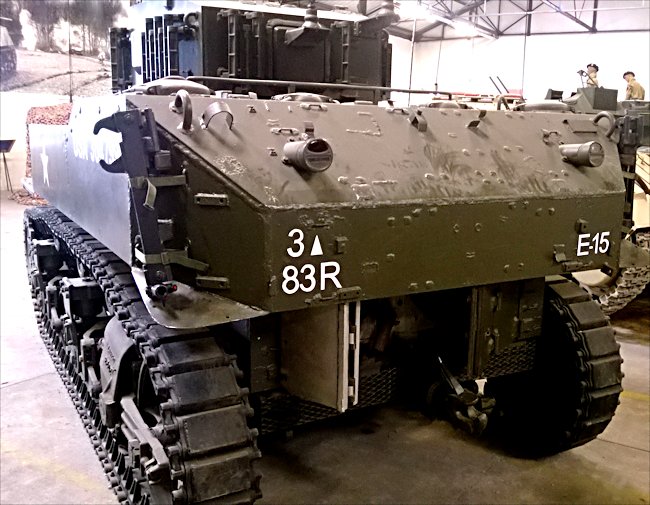
Rommel quickly regrouped the resources of his two Panzer Divisions and the strength of the Italian Army to concentrate their forces so that he could deliver concentrated counter blows against the dispersed British Armoured Brigades in a series of bloody engagements.
At one point the British tanks strength was reduced from 350 tanks down to just 50 tanks in four days. Cunningham was replaced by General Neil Ritchie. Rommel over reached his supply lines when he made a dash for the Egyptian border. He started to run out of fuel, ammunition, water and food. The British were fighting during the retreat and reduced Rommel’s panzer force to just forty German and thirty Italian battle ready tanks. He was forced to retreat to the original start point. He had lost 195 tanks.
Captain Robert Crisp of the 3rd Royal Tank Regiment, commanded a M3 Stuart Honey tank. He dreaded coming up against the German 88mm Krupp Flak Gun when used in an anti-tank role. "The Flack gun’s 3,000 yard range meant that we would be within range of it for 1,800 yards before we could even fire off a shot from our 37mm gun’s maximum range of 1,200 yards. Eighteen hundred yards in these circumstances, is a long way. All British crews feared the 88mm." Only the mobility and speed of the Stuart light tank could save it.
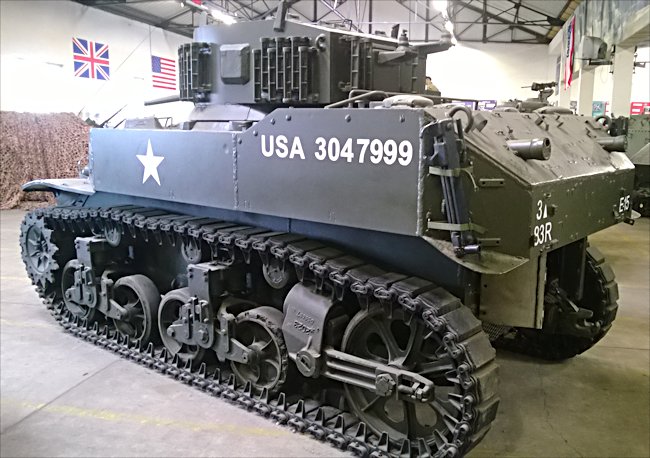
5th Royal Tank Regiment battle Rommel with M3 Honey Tanks
The 5th Royal Tank Regiment had lost most of its A9, A10 and A13 cruiser tanks during the first offensive by the newly arrived German Afrika Corps led by Rommel. Amazingly enough, only nine of these poorly armed and thinly armoured tanks had been knocked out, 75% of the regiments tank strength had simply broken down through mechanical failure. They had to be abandoned..
On 22 July 1941 the 5th RTR receives some new tanks from America. It was the M3 Stuart light tank, known affectionately as the 'Honey'. In some ways it was very similar to the tanks they were used to. It was similar in weight to the British Cruiser tanks. It only had a 37 mm gun, which was also similar, but the key difference was that the Americans used tried and tested off-the-shelf technology. This may the M3 Stuart tank much more reliable..
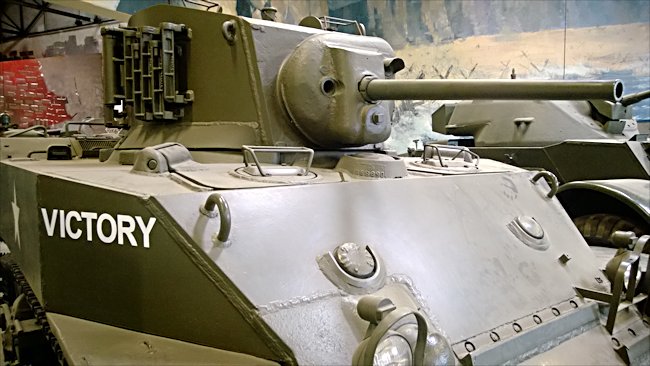
The suspension the track wheels came from an American agricultural tractor that had been in use since the 1930s. The engine was from a fighter plane. It was a radial piston engine. What this all meant was that the Honey would keep going far longer without breaking down. A nice side-effect of the air cooled engine was that you did not need water for a radiator. Water in the desert campaign was a very precious resource. The engine sucked the air it needed through the crew compartment, thus providing a form of cooling air-conditioning..
The men of the 5th Tanks were going to test this tank to the limit during operation Crusader. On 18 November 1941, after four long months of preparation, the British crossed the border back into Libya. As part of the 7th Armoured Division, the 5th Royal Tank Regiment helped make up a 750 tank army. This was twice the number available to Rommel at this stage of the war. .
They also had generous air support from the RAF. The operations objectives was to retake Libya, relieve the siege Tobruk and destroy the Afrika Corps. They hoped to envelop the Germans and Italians by using a left hook manoeuvre. This would bring them close to the Tobruk Garrison, who hopefully will be able to break out to meet them..
Within two days of crossing the border between Egypt's and Libya the 5th Tanks had bypassed the enemy front line and driven 150 miles into enemy territory. 5th RTR M3 Stuart tank commander Gerry Solomon recalls, " When we had got the Honeys that was when we really got involved in the fighting. The Honey was a very manoeuvrable tank. And we could get in places where others, like the heavy Matilda tank, could not get." .
The honeys speed and reliability enabled the tanks of the 5th RTR to speed ahead to the airfield of Sidi Rezegh near Tobruk. The British sees it with a surprise attack, but soon that success turned sour. The British commanders thought that the tactic of rushing the Germans, like the charge of the light Brigade, might work to their advantage..
The British tank crews thought this tactic was mad but had to follow orders. Trooper Jake Wardrop made the following entry in his diary, "It was decided to give them the good old charge again. Quite frankly I was not so strong for this charging business, although we continue to do it and off we went. We went storming right into these tanks firing as we went.".
Rommel had to break out the British encirclement or face defeat. The airfield at Sidi Rezegh became the focus of his breakout efforts. German 80 mm anti-tank guns and panzers slugged it out the British. One tank crew commented that it was like a scene from the apocalypse..
Tank commander Gerry Solomon commented, "My troop leader's tank was hit and it immediately brewed up into flames. Reg, one of the crew, managed to get out. Most his clothes were missing. The few bits of clothes that he did have on were on fire. When we managed to get to him, they tend to him, his skin had all come off. It had just curled up. Later we had a look inside a burnt out tank. We saw a completely bleached skeleton with a pair of rimmed glasses still on the skull. With regards firepower the Honey's gun was inadequate against German armour which was three sometimes 4 inches thick. You shells just bounced off ".
During the battle, the British light tank crews, received a sobering lesson on how ineffective, there 'pop-gun' was against the new German upgraded panzer tanks. This is what they called the 37 mm gun fitted to their M3 Stuart tanks. To get any chance of knocking out the German tank, they had to get within 800 yards. All the time they were doing that they would be under threat of being shot by a German 88mm anti-tank gun that had a range of 2 miles. Its shells were huge and devastating to Honey tank..
The battle became a great big slugging match where superior German guns and armour began to become an important factor. By the evening of 21 November 1941, 5th Tanks Honeys were involved in the desperate fighting at the airfield. Brigadier Jock Campbell took matters into his own hands. In an open topped staff car, during the heat of the battle, with shells and bullets flying everywhere, he urged the tanks to follow him. It was an act of courage bordering on madness for which he won the Victoria Cross. .
The price of the renewed attack was heavy. Many tanks were knocked out and crews lost. In early December the British managed to relieve the siege of Tobruk and then went on to complete the re-conquest of Western Libya. After weeks of fighting Rommel managed to battle his way out of the Allied trap and withdraw with what remained of the African Corps.
Who gave the M3 Stuart tank the nickname honey?
Because the British named many of the American tanks using the British Army under the American lend lease arrangement after US generals it is commonly believed by some that the British troops named the M3 light tank 'Honey' because it was such an improvement on the tanks they use before. This myth is wrong.
David Fletcher, the British tank historian at Bovington Tank Museum, said that to the British the word 'Honey' means a sticky stuff produced by bees that you put on toast. The use of the word 'Honey' as a term of endearment or to imply that something is a good thing is an Americanism. If the British tank crews use the word honey to describe the M3 tank then they got it from the Americans.
Where can I find other preserved M3 Stuart (Honey) Light Tanks?
- M3 - Staman International Trading, Nijverdal, Netherland, Holland
- M3 - Lanzlinger Collection, Ruthi, Switzerland
- M3 - Ghana Armed Forces Museum, Fort Kumasi, Kumasi, Ghana
- M3 - PNG Museum, Port Moresby, Papua New Guinea
- M3 - Australian Armour and Artillery Museum, Cairns, QLD, Australia
- M3 - Private collection, VIC, Australia
- M3 - 2x John Belfield collection, VIC, Australia
- M3 - Ontario Regiment Museum, Canada
- M3 - Fort Lee U.S. Army Ordnance Museum, VA, USA
- M3 - National Infantry Museum, Fort Benning, GA, USA
- M3 - 3x National Armor and Cavalry Museum, Fort Benning, GA, USA
- M3 - 2x Veterans Memorial Museum, Huntsville, AL, USA
- M3 - National Guard's Camp Beauregard, Pineville, LA, USA
- M3 - 4th Infantry Division Museum, Ft. Hood, TX, USA
- M3 - National Museum of the Pacific War, Fredericksburg, TX, USA
- M3 - Camp San Luis Obispo, CA, USA
- M3 - Escola de Material Bélico (EsMB), Vila Militar, Rio de Janeiro, Brazil
- M3 - Parque Regional de Manutencao/1, Vila Militar, Rio de Janeiro, Brazil
- M3 - Museu Militar Conde de Linhares, Rio de Janeiro, Brazil
- M3 - Escola de Sargentos de Logística, Deodoro, Brazil
- M3 - Colegio Militar, Belo Horizonte, Brazil
- M3 Hybrid - Tank Museum Bovington, England
- M3 Hybrid - Chris Till Collection, Lancashire, England
- M3 Hybrid - Jean Georges Collection, France
- M3 Hybrid - Lanz linger Collection, Rüthi, Switzerland
- M3 Hybrid - Yad la-Shiryon Museum, Latrun, Israel
- M3 Hybrid - Military museum, Dhaka, Bangladesh
- M3 Hybrid - RAAC Tank Museum, Puckapunyal, VIC, Australia
- M3 Hybrid - John Belfield Collection, VIC, Australia
- M3 Hybrid - Army Museum of Western Australia, Fremantle, WA, Australia
- M3 Hybrid - Merredin Military Museum, WA, Australia
- M3 Hybrid - Nungarin Heritage Machinery and Army Museum, Nungarin, WA, Australia
- M3 Hybrid - Beck Aviation and Military Museum Mareeba, QLD, Australia
- M3 Hybrid - Rob McBride Collection, Kingaroy, QLD, Australia
- M3 Hybrid - Australian Armour and Artillery Museum, Cairns, QLD, Australia
- M3 Hybrid - Private collection, Tamworth, New South Wales, Australia
- M3 Hybrid - 2x Ron Fry collection, VIC, Australia
- M3 Hybrid - Phil Lloyd Collection, Australia
- M3 Hybrid - 2x Museu a Ceu Aberto, 1e BCCL, Campinas, Brazil
- M3 Hybrid - 3x Steindorff Viaturas, Panambi, Brazil
- M3 Hybrid - 29º Batalhao de Infantaria Blindado, Santa Maria, Brazil
- M3 Hybrid - Museu Militar do Comando Militar do Sul, Porto Alegre, Brazil
- M3 Hybrid - Associacao Brasileira de Preservadores de Viaturas Militares (ABPVM), Brazil
- M3A1 - Aberdeen U.S. Army Ordnance Museum, MD, USA
- M3A1 - Bovington Tank Museum, UK
- M3A1 - Mike Stallwood Collection, UK
- M3A1 - 2x RR Services company, UK
- M3A1 - 2x Marcus Glenn, Long Stutton, UK
- M3A1 - Dutch Cavaleriemuseum, Amersfoort, Netherlands, Holland
- M3A1 - Private Collection, Netherlands
- M3A1 - Private Collection, Turnhout, Belgium
- M3A1 - French Tank Museum, Musee des Blindes, Saumur, France
- M3A1 - Normandy Tank Museum, Catz, near Carentan, France
- M3A1 - Christian Dours Collection, near Chartres, France
- M3A1 - ASPHM association, La Wantzenau, France
- M3A1 - Schweizerisches Militarmuseum, Full, Switzerland
- M3A1 - Land Forces Museum, Bydgoszcz, Poland
- M3A1 - Panzerfarm, Keszycki Brothers Collection, Poland
- M3A1 - Muzeum Obrnene Techniky, Smrzovka, Czech Republic
- M3A1 - Park of Military History, Pivka, Slovenia
- M3A1 - Zemaljskimuzej (National Museum) Sarajevo, Bosnia and Herzegovina
- M3A1 - Manjaca training area, south of Banja Luka, Bosnia and Herzegovina
- M3A1 - Kalemegdan Military Museum, Belgrade, Serbia
- M3A1 - 2x Etimesgut Tank Müzesi, Ankara, Turkey
- M3A1 - National Museum of Military History, Johannesburg, South Africa
- M3A1 - Dam Snake Park, Hartebeespoort, North West province, South Africa
- M3A1 - Pretoria Regiment base, Salvokop Pretoria, Gauteng province, South Africa
- M3A1 - Smuts House Museum, Irene, near Pretoria, Gauteng province, South Africa
- M3A1 - Springs, Gauteng province, South Africa
- M3A1 - Warriors Shellhole, Muldersdrift, Gauteng province, South Africa
- M3A1 - World War II Museum, Loxton, Northern Cape province, South Africa
- M3A1 - 2x School of Armour Museum, Tempe, Bloemfontein, Free State province, South Africa
- M3A1 - MOTH Shellhole, Bethlehem, Free State province, South Africa
- M3A1 - Natal Mounted Rifles HQ, Durban, Natal province, South Africa
- M3A1 - Hillandale Practical Pistol and Rifle Club, Mapstone Range, near Hopewell, Natal province, South Africa
- M3A1 - Ratanga Junction Theme Park, Cape Town Western Cape province, South Africa
- M3A1 - Near the Stadium, Cape Town, Western Cape province, South Africa
- M3A1 - Being restored by Sgt. Maj. Howell, South Africa
- M3A1 - Gweru Military Museum, Zimbabwe
- M3A1 - Kubinka Tank Museum, Russia
- M3A1 - Vadim Zadorozhny Museum, Arhangelskoe Moscow Oblast, Russia
- M3A1 - Museum of the National Military History, Padikovo, Moscow Obl. Russia
- M3A1 - Museum of military equipment Battle Glory of the Urals, Verkhnyaya Pyshma, Sverdlovsk Oblast, Russia
- M3A1 - Armoured Corps Museum, Ahmednagar, Maharashtra, India
- M3A1 - Pakistan Army Museum, Rawalpindi, Pakistan
- M3A1 - Royal Palace Garden, Mandalay, Burma/Myanmar
- M3A1 - Satria Mandala Museum, Jakarta, Indonesia
- M3A1 - Njankuk, Indonesia
- M3A1 - Museum Dharma Wiratama, Yogyakarta, Indonesia
- M3A1 - Ambarawa, Indonesia
- M3A1 - Fort van der Wijck, Gombong, Indonesia
- M3A1 - Military Museum 'Mandala Wangsit', Bandung, Jawa Island, Indonesia
- M3A1 - Bandung, Jawa Island, Indonesia
- M3A1 - Pusat Kesenjataan Kavaleri (Pussenkav) military unit Bandung, Indonesia
- M3A1 - Monumen Tempat Lahir Jendral Soerdirman, Indonesia
- M3A1 - Private collection, Guadalcanal, Solomon Islands
- M3A1 - Hells Point dump, Guadalcanal Island, Solomon Islands
- M3A1 - Arundel Island, New Georgia Islands, Solomon Islands
- M3A1 - Ron Fry collection, VIC, Australia
- M3A1 - The National Military Vehicle Museum, MVPS South Australia Edinburgh Park, near Adelaide, Australia
- M3A1 - Todd Vail Collection, Australia
- M3A1 - Dan Dennis Collection, Australia
- M3A1 - National Army Museum, Waiouru, New Zealand
- M3A1 - 2x Wright Museum, Wolfeboro, NH, USA
- M3A1 - Wright Museum, Wolfeboro, NH, USA
- M3A1 - VFW Post, Bath, NY, USA
- M3A1 - American Legion Post, Rome, NY, USA
- M3A1 - Military Museum Of Southern New England, Danbury, CT, USA
- M3A1 - New Milford, CT, USA
- M3A1 - National Guard Militia Museum of New Jersey, Sea Girt, NJ, USA
- M3A1 - Fort Meade, MD, USA
- M3A1 - VFW Post, Crewe, VA, USA
- M3A1 - American Legion Post, Lynchburg, VA, USA
- M3A1 - Virginia Museum of Military Vehicles, Nokesville, VA, USA
- M3A1 - 2x National Museum of the U.S. Marine Corps, Quantico, VA, USA
- M3A1 - 2x National Armor and Cavalry Museum, Fort Benning, GA, USA
- M3A1 - National Infantry Museum, Fort Benning, GA (USA
- M3A1 - Pomeroy Parade Field, Fort Benning, GA, USA
- M3A1 - Georgia Veterans State Park, Cordele, GA, USA
- M3A1 - Veterans Memorial Museum and Park, Tampa, FL, USA
- M3A1 - Volo Auto Museum, IL, USA
- M3A1 - Russell Military Museum, Zion, IL, USA
- M3A1 - Ropkey Armor Museum, Crawfordsville, IN, USA
- M3A1 - Indiana Military History Museum, Vincennes, IN, USA
- M3A1 - Fire range, Fort Knox, KY, USA
- M3A1 - 194th Tank Battalion Bataan Monument, Brainerd, MN, USA
- M3A1 - Wisconsin Veterans Museum, Madison, WI, USA
- M3A1 - National World War Two Museum, New Orleans, LA, USA
- M3A1 - Texas Military Museum, Camp Mabry, Austin, TX, USA
- M3A1 - 2x Fort Bliss Museum, Fort Bliss, TX, USA
- M3A1 - 4th Infantry Division Museum, Ft. Hood, TX, USA
- M3A1 - National Museum of the Pacific War, Fredericksburg, TX, USA
- M3A1 - Fort Lewis Museum, Fort Lewis, WA, USA
- M3A1 - Washington National Guard Museum, Camp Murray, WA, USA
- M3A1 - Steeve Greenberg Collection, Wilsonville, OR, USA
- M3A1 - World War II US Military Vehicle Museum, San Rafael, CA, USA
- M3A1 - Oshawa Military and Industrial Museum, Oshawa, Ontario, Canada
- M3A1 - Academie de la Police Nationale, Port-au-Prince, Haiti
- M3A1 - Fortaleza Osama, Santo Domingo, Dominican Republic
- M3A1 - 5° Regimiento de Caballeria, Cuautla, Morelos, Mexico
- M3A1 - Secretariat of National Defense, Lomas de Sotelo, Miguel Hidalgo Mexico City, Mexico
- M3A1 - Campo Sarabia, near Salamanca, Mexico
- M3A1 - Torreon, Mexico
- M3A1 - Zona 10, Guatemala City, Guatemala
- M3A1 - Museo Militar de la Fuerza Armada 'Cuartel El Zapote' San Salvador, Salvador
- M3A1 - Brigada Galapagos, Riobamba, Ecuador
- M3A1 - Museo de Vehiculos Blindados de la Brigada de Caballeria Blindada, Riobamba, Ecuador
- M3A1 - Escuela de Caballería, Bogota, Colombia
- M3A1 - Escuela militar de cadetas General Jose Maria Cordoba Bogota, Colombia
- M3A1 - GMRIN, Grupo de caballería mecanizada No13 Rincón Quiñones, Bogota, Colombia
- M3A1 - Escuela de Caballería y Blindado del Ejercito Venezolano, Venezuel
- M3A1 - Avenida Andres Bello, Merida, Venezuela
- M3A1 - Real Felipe Museum, Lima, Peru
- M3A1 - Cuartel Salaverry, Arequipa, Peru
- M3A1 - Cuartel de Ejercito, Moquegua, Peru
- M3A1 - Parque del Ejercito, Callao, Peru
- M3A1 - Base of Armored Cavalry Regiment Nr 1 'Calama', Patacamaya, Bolivia
- M3A1 - Near the small domestic-military airport, Santa Cruz, Bolivia
- M3A1 - Parque Regional de Manutencao/1, Vila Militar, Rio de Janeiro, Brazil
- M3A1 - 5º Regimento de Carros de Combate, Vila Militar, Rio de Janeiro, Brazil
- M3A1 - Academia Militar das Agulhas Negras (AMAN), Resende, Brazil
- M3A1 - Dimas de Melo Pimenta (DIMEP), Vila Leopoldina, Brazil
- M3A1 - Museu do Expedicionario, Curitiba, Brazil
- M3A1 - Museu Militar do Comando Militar do Sul, Porto Alegre, Brazil
- M3A1 - Museo de Tanques del Arma Caballeria Blindada, Iquique, Chile
- M3A1 - Academia Militar, Capiata, Paraguay
- M3A1 - Colegio Militar de Sub Oficiales, near Encarnacion, Paraguay
- M3A1 - 13x in the Paraguayan Army
- M3A1 - Museo de Caballería, Uruguay
- M3A1 - 4th Cavalry Mechanized Regiment, Montevideo, Uruguay
- M3A3 - Kevin Wheatcroft Collection, UK
- M3A3 - 2x French Tank Musem, Saumur, France
- M3A3 - Museum 'Le Grand Bunker', Ouistreham, France
- M3A3 - Private collection, Vaucluse department, France
- M3A3 - Park of Military History, Pivka, Slovenia
- M3A3 - Hrib svobode (Liberty Hill), Ilirska Bistrica, Slovenia
- M3A3 - Military Barracks, Banja Luka, Bosnia and Herzegovina
- M3A3 - Manjaca training area, south of Banja Luka, Bosnia and Herzegovina
- M3A3 - Kalemegdan Military Museum, Belgrade, Serbia
- M3A3 - Sri Dasmesh Academy near Anandpur Sahib, India
- M3A3 - Satria Mandala Museum, Jakarta, Indonesia
- M3A3 - Palagan Museum, Ambarawa, Indonesia
- M3A3 - 3x The Tank Museum, Beijing, China
- M3A3 - Military Museum of the Chinese People's Revolution, Beijing, China
- M3A3 - Yunnan Highway Museum, Lujiangba Station, Longyang district, Baoshan, China
- M3A3 - Camp HuKou, HuKou, Hsinchu, Taiwan
- M3A3 - National Armor and Cavalry Museum, Fort Benning, GA, USA
- M3A3 - Celina, OH, USA
- M3A3 - 2x Minerva Veterans Memorial Park, Minerva, OH, USA
- M3A3 - Court house, Warsaw, IN, USA
- M3A3 - Russell Military Museum, Russell, IL, USA
- M3A3 - Smith park, Chicago, IL, USA
- M3A3 - Veterans Memorial Park, Maywood, IL, USA
- M3A3 - Cemetery (north of town), Hoopeston, IL, USA
- M3A3 - American Legion Post, Nokomis, IL, USA
- M3A3 - American Legion Post, Houston, MN, USA
- M3A3 - Fort Hill AP, TX, USA
- M3A3 - Planes of Fame museum, Chino, CA, USA
- Source - Pierre-Oliver Buan - http://the.shadock.free.fr/Surviving_Panzers.html
WW2 tank books

